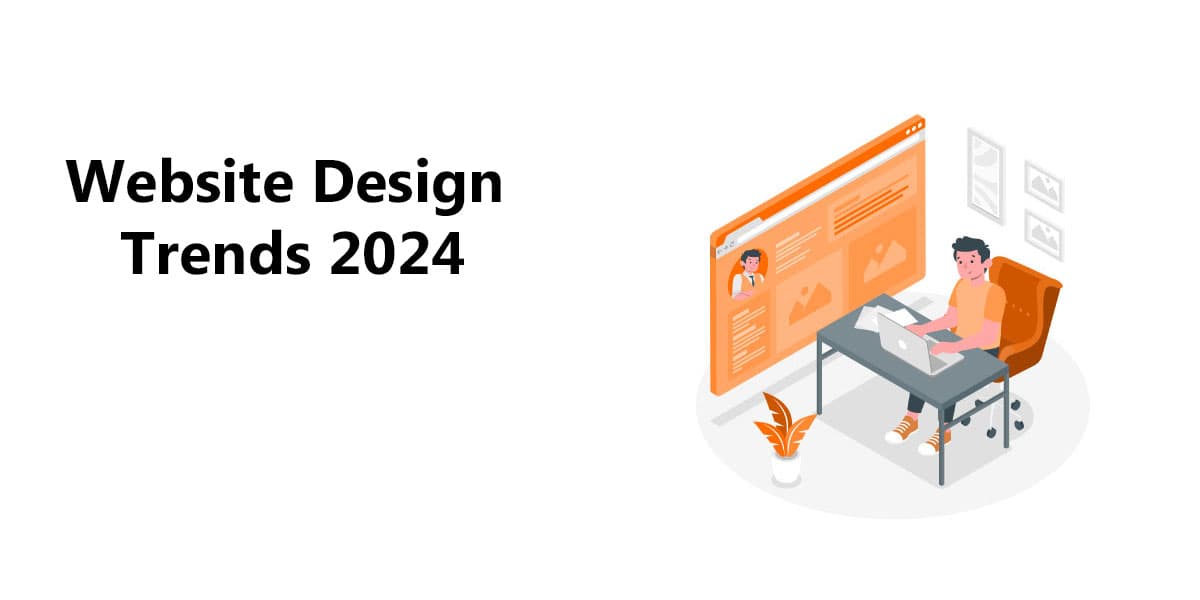Shaping the Future: Key Web Design Trends for 2024
Web design is always changing, with new trends emerging each year to meet users’ needs and technological advancements. As we move into 2024, these trends are becoming even more important for creating websites that are not only visually appealing but also functional and user-friendly.
In 2024, web design will focus on improving user experience, focusing on mobile optimization, and incorporating the latest technologies like augmented reality and voice interfaces. These trends are shaping the future of web design, helping businesses and developers create more engaging and effective websites.
Minimalism and Simplicity
This design approach focuses on creating clean, uncluttered websites that are easy for users to navigate. The idea behind minimalism is that less is more—by reducing the number of elements on a page, websites become more streamlined, and users can quickly find what they’re looking for without distractions.
Minimalist websites use simple color schemes, white space, and clear, bold typography. This makes the content stand out and improves readability. It also helps websites load faster, a key factor in keeping visitors engaged.
By removing unnecessary elements, websites can offer a better user experience. In 2024, this trend will continue to grow as more designers focus on user-centric layouts that make it easier for visitors to interact with content.

Dark Mode and Color Trends
Dark mode switches the background to a darker color, usually black or gray, while keeping text and elements in lighter shades. In addition to dark mode, we’re seeing bold and creative uses of color in web design.
Another trend is using color to guide users through a website. For example, certain buttons or sections may be highlighted boldly to draw attention and encourage interaction. Designers create visually stunning, functional, and stylish websites by combining dark mode with exciting color palettes.
Voice User Interface (VUI)
Voice User Interface (VUI) is quickly becoming an important part of web design, especially with the rise of voice assistants. In 2024, websites will increasingly support voice commands, allowing users to navigate and interact without typing or clicking. VUI makes websites more accessible, especially for people who prefer or need hands-free.
Incorporating VUI into web design requires optimizing content for voice search. This means websites must use natural language and answer user questions clearly and concisely, as voice queries are often phrased differently than typed searches.

Mobile-First and Responsive Design
With more people accessing websites on smartphones and tablets, designing for smaller screens is no longer optional—it’s essential. A mobile-first strategy means creating the website layout and features with mobile users in mind from the start rather than adapting a desktop design to fit smaller screens later.
The mobile-first design focuses on simple navigation, easy-to-read content, and fast loading times, which are important for keeping mobile users engaged. It ensures that the most critical information is presented clearly on smaller screens, making the site more user-friendly on all devices.
Accessibility and Inclusivity
Accessibility ensures that people with disabilities, such as vision or hearing impairments, can easily use and navigate websites. Inclusivity goes beyond that, focusing on designing websites that cater to a wide range of users, including those with different abilities, backgrounds, and preferences.
Accessible websites use features like high-contrast text, screen reader compatibility, and keyboard-friendly navigation to make sure all users can interact with the site. For example, adding alternative text (alt text) to images allows visually impaired users to understand visual content through screen readers. Similarly, captions and transcripts for videos help users with hearing impairments engage with multimedia content.
Inclusivity in web design also means considering different languages, cultural contexts, and user preferences. Websites should welcome all users, offering content in multiple languages when needed and avoiding design choices that might exclude certain groups.
Key Takeaways
As we look ahead to 2024, it’s clear that web design is evolving to meet the needs of a diverse and tech-savvy audience. Trends like minimalism, dark mode, mobile-first design, and accessibility are shaping how websites are created, ensuring they are user-friendly, engaging, and inclusive. By staying on top of these trends, businesses can create websites that attract visitors and keep them returning for more. The future of web design is about enhancing the user experience, and those who embrace these changes will stay ahead of the competition.
